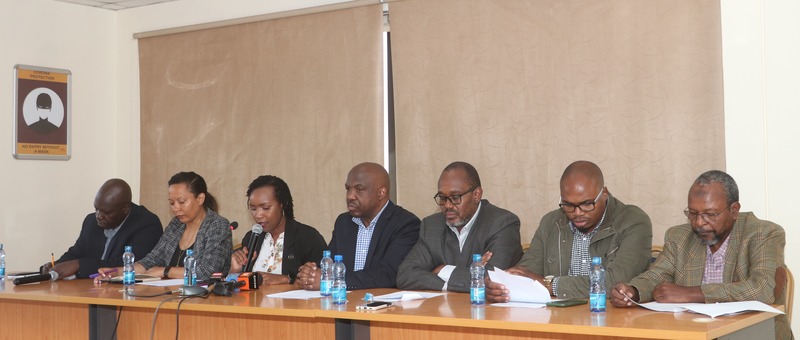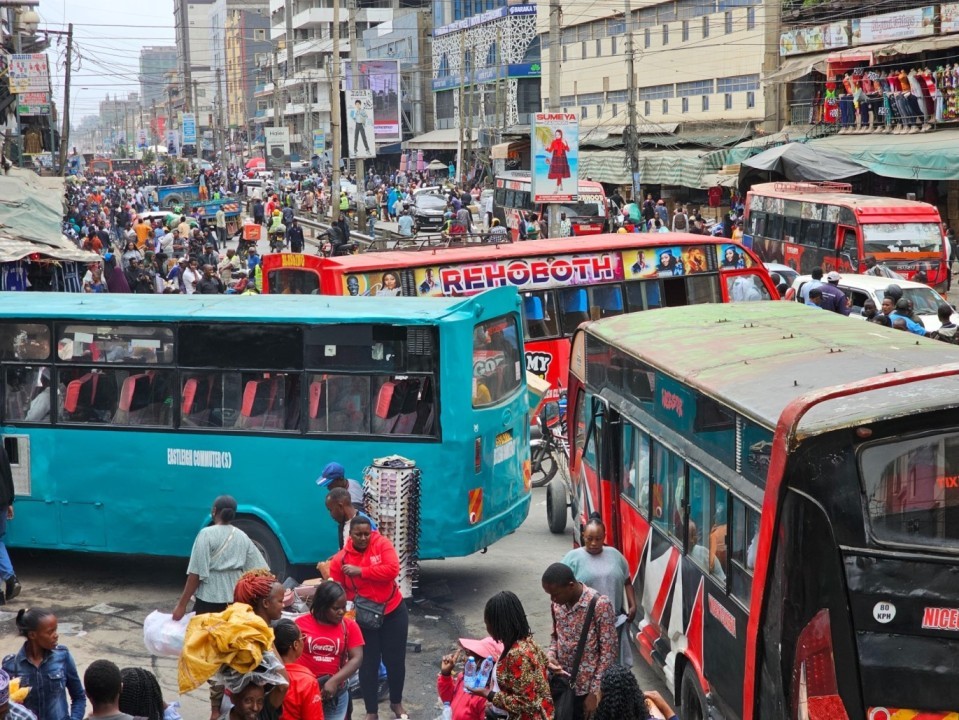Architects, planners criticise Sakaja's proposal to raise floor limit for buildings
The remarks come after Governor Sakaja said that construction of high-rise apartments in upscale neighborhoods would continue despite criticism, raising concerns among residents about the city's changing landscape.
Professional bodies have condemned Governor Johnson Sakaja's recent declaration on zoning and the removal of building height restrictions.
The associations, including bodies like the Architectural Association of Kenya and the Kenya Institute of Planners, expressed concerns about the governor's approach, emphasising adherence to proper legal procedures and planning laws.
More To Read
- Bunge La Mwananchi, activists move to court to block Sakaja-National Government deal
- Should Nairobi be a county? The capital city's management crisis that refuses to go away
- High Court dismisses Sakaja’s bid to gag media over protest coverage
- Governor Sakaja revives County Policing Authority to tackle rising crime
- Senators threaten legal action after Sakaja fails to attend oversight meeting
- Nairobi to appoint six borough managers to enhance service delivery
Other bodies include; the Kilimani Project Foundation, the Lavington Five Roads Association, the Kileleshwa Ward Neighbourhood Association, the Town and County Planners Association of Kenya, the Kenya Green Building Society, the Institution of Surveyors of Kenya, the Institution of Engineers of Kenya, the Institution of Construction Project Managers of Kenya, and the Public Health Society of Kenya.
According to Florence Nyole, president of the Architectural Association of Kenya, the County Governments Act of 2012 mandates that zoning decisions must align with pertinent plans, including the Physical and Land Use Planning Act (PLUPA) 2019.
"While we agree that there is a need to accommodate Nairobi's projected growth of 10.5 million by 2050, we wish to categorically state that the governor's approach blatantly disregards the correct legal procedure and good order," she said.
They said the governor should stick to the Physical and Land Use Planning Act (PLUPA) 2019, which is the ultimate planning law in Kenya. "It provides a hierarchy of plans and guidelines on how ground coverages, skyline limits, plot ratios, and land use are arrived at through both technical processes and public participation."
 Florence Nyole, president of the Architectural Association of Kenya. (Photo: Justine Ondieki)
Florence Nyole, president of the Architectural Association of Kenya. (Photo: Justine Ondieki)
The group highlighted the 2014 Nairobi Integrated Urban Development Plan (NIUPLAN) which identified seven sub-centres that had been earmarked as critical nodes requiring further detailed planning, claiming the critical plan had not moved forward.
"We even note that bids for the planning of Woodley Estate, Ruai, Kasarani, Embakasi, and Kibera were put out, yet to date this process has not moved forward. These plans and procedures, as laid out in law, would ensure the creation of a shared vision for Nairobi by Nairobians," said Florence.
The statement highlights the need for responsible densification guided by proper planning processes, prioritizing critical infrastructure development, including sewerage, water reticulation, schools, health amenities, open green spaces, fire and emergency services, and public transport networks.
 Stakeholders from different associations during a press briefing on March 26, 2024. (Photo: Justine Ondieki).
Stakeholders from different associations during a press briefing on March 26, 2024. (Photo: Justine Ondieki).
The association urges the county to prioritise the development and execution of physical land use plans and local physical development plans (LPDPs) for neighbourhoods, emphasising the importance of planned development in light of recent flooding and gas explosions in residential areas.
"The recent flooding, gas explosions in residential areas, sewer bursts, worsening traffic congestion, limited to no water provision, constant electricity outages and rampant insecurity in Nairobi are clear indicators of the dire consequences of unplanned and haphazard development," they said.
The remarks come after Governor Sakaja said that construction of high-rise apartments in upscale neighbourhoods would continue despite criticism, raising concerns among residents about the city's changing landscape.
The governor additionally stated that President William Ruto approved his plan to build high-rise apartments in the city, following the removal of a long-standing restriction.
He said that the move will pave the way for the construction of high-rise apartments under the Affordable Housing Programme and that the capital city is taking an inevitable expanding trajectory and more room to accommodate more Kenyans must be created.
Sakaja revealed that the government was looking to make changes to the floor limit in Nairobi. For estates near airports, he noted that the limit would be set at 25 while developers in other residential areas would be allowed to go up to 75 floors in the new proposal.
However, the joint statement calls for adherence to due process and a shared vision with Nairobi residents to ensure sustainable urban development and preserve the city's dignity.
Top Stories Today















































